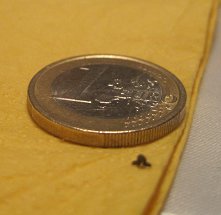
We recently received a message from a reader via the All About Worms Facebook page about some very small white worms he has been finding in his bed. (He actually sent us 12 messages about the extremely small white worms, leading us to think he is sending messages via the Facebook chat window, a default option that can be changed, for what it is worth.) The worms stand up vertically and look like the “those caterpillar[s] you see every year by the thousands that come out of the trees here in Tennessee,” by which he might mean they look like inchworms, the larval form of geometer moths. In all the messages he sent, which included a number of pictures, he never actually asked us to identify the small white worms in the bed. Rather, he was primarily concerned with his and his family’s safely. He feared that the worms might burrow into their skin. So, our principal task is to address whether these exceedingly small white worms are harmful or dangerous, but we will also add a couple of notes about identification as we go along.
We emphasized that the worms are particularly small – hence our employment of the intensifiers “very,” “extremely,” and exceedingly” before the word “small” – and we mean it. Consider this photo:
Of the various photos our reader sent in, this is the clearest image of the worm. However, even in this picture you could see essentially nothing, so we zoomed in a bit, which kind of helps, even though it makes the photo slightly blurry. The reader described the worm as having a white body with a black head, characteristics that are faintly discernible in the image above. (For the record, our reader should check out the article just linked to, the one about small white worms with black heads, because it has some information that is germane to his concerns.) We have a slightly clearer picture of a creature that is similar to the worm our reader found:
This picture was taken by us in the Austrian Alps, and thus it presumably isn’t the exact same species of worm that our reader found in Tennessee, but it is likely related. Everything the reader says is applicable to what we found. Because of the way the creatures move, we think both the images above might show two different species of inchworm, which, as we mentioned above, are the larval form of geometer moths, making them caterpillars. We’ve been using the word “worm” only to keep with our reader’s usage, even though we are basically certain he found a larvae. It could be an inchworm or one of the other black-headed larvae we have written about, but we are confident he is finding some kind of larvae.
As for the reader’s primary concern, we are fairly certain that the larvae he found presents no threat to him or his family. No matter what, these larvae aren’t going to burrow into anyone’s skin. (We know of only one creature in the world that does this – screw worms – and these have been eradicated from much of the world, including the United States.) In fact, the larvae our reader is finding, whatever they may be, are probably much too small to bite or otherwise harm human skin, even assuming this is one of the larva’s defense mechanisms, which likely isn’t the case. Regardless of whether the creatures can directly harm a person, it is worth noting that larvae can be vectors for disease, especially since many species of larvae live in less-than-sanitary places. (For example, it is possible our reader found moth fly larvae, a larvae that can have white skin and a black head, and these hang out in places like shower trains and toilets, where there is plenty of bacteria.) It is not as if coming in contact with larvae will immediately transmit some disease to you, but it is worth keeping in mind. Lots of larvae scattered about one’s bed could spread bacteria, which is best to avoid.
Unfortunately, we don’t exactly know what our reader found, and so we can’t say with absolute certainty that the larvae aren’t harmful to our reader. However, we can say that it is likely they won’t cause any direct harm, although it is still advisable to get rid of them by thoroughly cleaning the affected area (the bed and the surrounding area). Larvae do not make good bedfellows. Hopefully this helps our reader and sets his mind at ease.
All About Worms is always free, always reader-supported. Your tips via CashApp, Venmo, or Paypal are appreciated! Receipts will come from ISIPP Publishing.
You might also find these guys interesting!
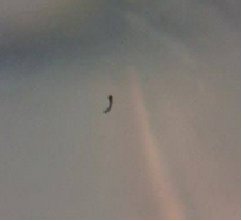




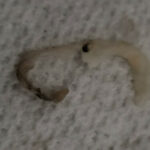
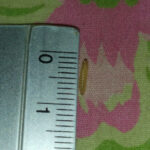
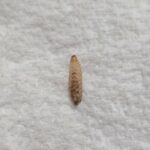
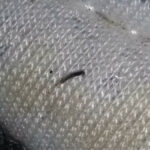
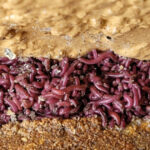
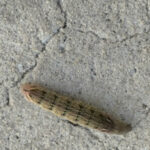
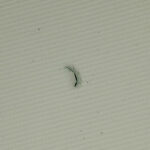

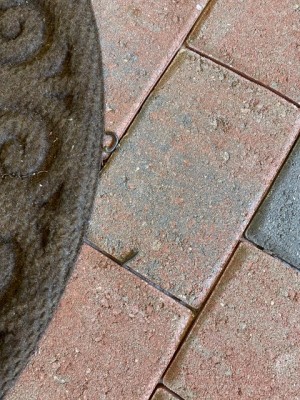


I found these exact same “worms” “larva” whatever they are hanging from the vent and light above my stove. I’ve never seen them before and would like to know what they are!?!?
We stripped the sheets and washed and dried them on high heat . Vacumed the room extensivly and took the ac unit outside and put bug killer inside and let it run outdoors for about 2 days and no more worms (larve) yay! Thanks for the article